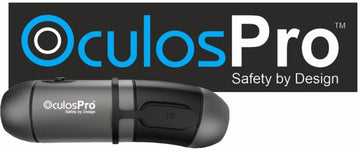Winter brings dark mornings and evenings, so there never seems to be enough hours in the day for getting all those equine jobs done and means some things can get pushed to the bottom of the pile of priority.
One job that you should never compromise on however, is that daily check on your horse. It can be tempting to just pop your horse out into the field in a rush to get the mucking out done, but this could mean you miss an opportunity to spot an injury early and take prompt action.

First aid treatment administered quickly and effectively can have a huge influence on the outcome of an injury. A minor cut or graze treated correctly using the basic contents of your first aid kit, will heal up in no time, leaving no lasting damage. However, if that wound goes unnoticed, infection can take hold in as little as six to eight hours.
Daily Checks - The ability to recognise ill-health is something that comes with experience but there are a few essential checks to carry out on a daily basis. On entering the stable in the morning or the field in the evening, look closely at your horse. How does he look? Is he alert, with pricked ears and interested in your presence?
It is perfectly normal for a horse to rest a hind leg but resting a front leg or being reluctant to move could indicate a problem. Rub your hands down all four legs, checking for wounds and feeling for any bumps and swellings. Pick feet out daily and place a hand on all four hooves to check for heat. Heat accompanied by sudden onset of lameness could indicate an abscess.
Check the frequency and consistency of droppings; has your horse passed an adequate number of droppings since you last visited? Noticing subtle changes early can make a real difference to the outcome, particularly when faced with a horse suffering from colic.
Remove rugs daily and run your hands over the body, checking for areas where the rug may have rubbed and also to keep an eye on body condition. Thick coats and winter rugs can hide a multitude of sins, so in winter, it is important to take even more time and look even closer, as that slight weight loss can be hidden.

So what should your basic First Aid Essentials be?
Wound Dressings – to protect a wound and promote healing, first aid kits should contain a good selection of various size dressings. A product such as Skintact® is a low-adherent dressing ideal for most wounds, as it offers protection and absorbs any exudates. For infected wounds an Activate® dressing which contains carbon naturally cleanses and improves the normal healing process.
Poultices - Animalintex® can be used to treat a wide variety of ailments varying from infected wounds, abscesses and embedded thorns to bruises, strains and sprains and is licensed by the Veterinary Medicines Directorate.

Cold Therapy - cold therapy is commonly used in the treatment of inflammation and soft tissue injuries and is a natural, drug-free way to help treat injuries and reduce pain. For immediate dry cold therapy a product such as Koolpak® is ideal.
Bandages - applying a bandage can help support and provide protection for tendons and ligaments, reduce swelling, secure dressings and assist in the healing process of injuries.
Veterinary Gamgee® - an absorbent high quality cotton wool enclosed in a non-woven or gauze cover is used to promote wound healing by insulating, cushioning and protecting wounds from external trauma.
Scissors – a decent pair of blunt ended scissors are essential for cutting bandages and dressings to the required size and also for the safe and easy removal of bandages.

Thermometer - a slight change in temperature might indicate that there is an underlying problem so having a good quality thermometer in your first aid kit is vital.
Store the first aid kit in a suitable container that is rodent proof and kept in a prominent position on the yard that it is accessible to everyone. During winter, the kit may need to be stored in a heated room to prevent certain products from freezing.
Administering First Aid
Clean all wounds as soon as possible (even minor ones) with a saline solution or a level teaspoon of salt per pint of previously boiled water. If necessary clip the coat and clean around the wound area.
Avoid spraying water directly onto the wound as this can force any contamination further inside. Assess the wound and if unknown try to discover the cause as there may be a foreign body hidden below the surface.
Do not poke about in the wound as this will cause infection. Flush the wound with saline solution before covering the affected area with a none-adherent dressing if necessary.
Bandages should be used to keep dressings in place, protect and keep wounds clean, provide support and aid inflammation. Never bandage a horse’s leg without padding. The bandage should not restrict circulation as this can affect the healing process and cause serious damage.

A wound that is contaminated and infected should be poulticed to help draw any debris and infection from the wound. This will need to be changed every 12 hours.
Winter Worries
As horses spend more time indoors and become less mobile, fluid can accumulate around joints and cause an increase in bursal injuries and strains.
They are also likely to be more boisterous when they do go out in the field, leading to strains, tendon injuries, and knocks. This can also be the case when hacking out on uneven ground which can rapidly become deep with slippery mud.

Winters wet, muddy conditions provide ample opportunity for foot abscesses as dirt and gravel are able to work their way easily under the shoe or into the foot of an unshod horse.

Ensure you check for mud fever which is a bacterial skin infection that can affect your horse’s skin on the heel, fetlock and pastern. In severe cases, particularly where there is inflammation, hot poulticing can help to remove scabs, following the same treatment as you would for cracked heels.
Standing in wet conditions can predispose some horses to thrush, a bacterial infection of the frog which is categorised by a smelly discharge or soft spots. To treat thrush, ask your farrier to remove all the diseased tissue before cleansing the area thoroughly with 10 parts warm water (ideally boiled first) to one part hydrogen peroxide before applying a hot wet poultice to the area.

The vet should always be called if a wound is spurting blood, requires stitching, has a foreign body embedded in it, or appears to be infected. If there is a raised temperature, is excessive swelling or the horse has not been vaccinated against tetanus, these should be taken very seriously.
If your horse appears anxious, depressed, or dazed and the mucus membranes are pale, he may be suffering from shock, especially following blood loss. Keep your horse calm and quiet, and not too hot or cold until the vet arrives.
Feature in association with www.robinsonhealthcare.com





